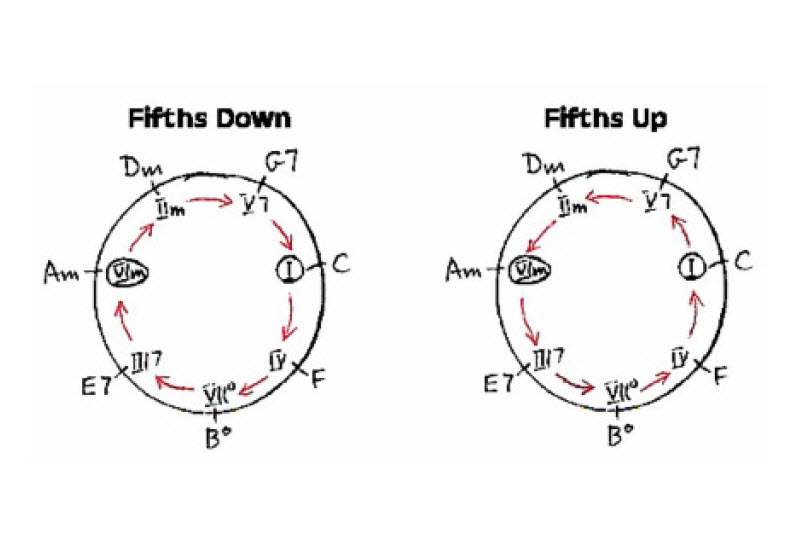You Are Reading the First 6 FREE Chapters (470 pages)
C Major Key and A Minor Key: Chords and Progressions
As an example, the chords of the C major key and its relative, the A minor key, are shown on the chord maps below. Recall that “fifth progression” simply means a progression of two chords whose roots are five scale notes apart. Figure 66 below shows the patterns of fifth progressions down and up.

FIGURE 66: Chord Maps of Fifth Progressions, Down and Up, for the Keys of C Major and A Minor
The fifth down is the strongest chord progression in harmony. In the chord maps of examples of classic songs coming up, you’ll see sections of the above patterns everywhere—especially fifth-down patterns.
The fifth down has one main drawback. Because it’s so powerful, everybody uses it. It’s the most commonly used type of progression. Safe and familiar. A string of fifth-down progressions sounds so familiar as to create an effect of predictability—but it’s a comfortable predictability and serves the accompanying melody well if the melody is significantly less predictable.
Fifths up, on the other hand, are usually weak progressions. But not always ...

